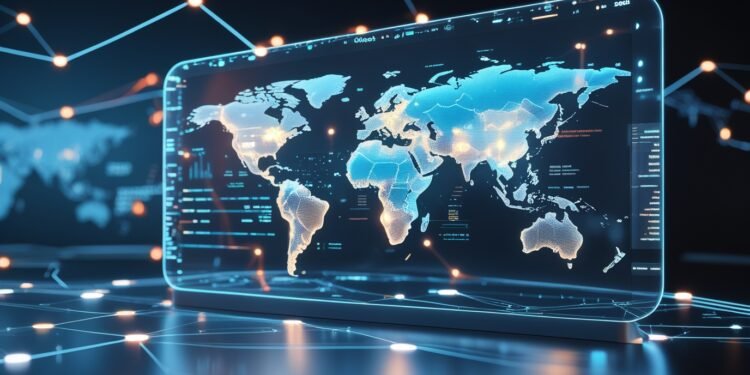In 2025, artificial intelligence is everywhere—writing, coding, generating media, analyzing data, and even making business decisions. But in this crowded field, one name towers over all others: ChatGPT. Since its initial release in 2022, OpenAI’s flagship conversational AI has evolved from a novelty chatbot into a global powerhouse, now boasting over 700 million weekly active users and processing between 2.5 and 3 billion prompts every single day.
This dominance isn’t just about having the best tech—it’s about owning the conversation, setting the standard for AI usability, and integrating into nearly every industry and workflow imaginable. While competitors like Google Gemini, Anthropic’s Claude, and Mistral are fighting for relevance, ChatGPT continues to define what the modern AI experience looks like.
The Numbers That Redefine AI Success
In the tech industry, user growth often tells the clearest story, and ChatGPT’s growth curve is nothing short of historic:
-
700M weekly active users in August 2025
-
Billions of prompts processed daily
-
Dominating ~60% of all AI-associated web traffic
-
Usage spread across over 150 countries
For perspective, this makes ChatGPT not only the most widely used AI in the world but also one of the most heavily trafficked platforms on the entire internet. It’s not just a tool—it’s become part of daily life for students, developers, marketers, executives, and even government agencies.
From Chatbot to Multimodal Powerhouse
When ChatGPT first launched, it was essentially a text-only chatbot. Fast-forward to today, and it’s a multimodal AI capable of:
-
Understanding and generating text with GPT-5’s enhanced reasoning abilities
-
Analyzing and generating images with integrated vision models
-
Interpreting and producing audio for voice conversations and transcription
-
Handling code execution for developers
-
Integrating with external tools and APIs for real-time data and automation
This transformation from a simple Q&A interface into a fully interactive, multi-sensory AI platform has been key to its sustained growth. Users no longer think of ChatGPT as a single-use tool—it’s a workspace, assistant, and creative partner rolled into one.
Why ChatGPT Is Winning the AI War
The AI market is flooded with alternatives, yet none have managed to unseat ChatGPT. Here’s why:
1. Accessibility
OpenAI has made ChatGPT available to almost anyone, with a free tier that’s surprisingly capable. This “try before you buy” approach hooks users early.
2. Integration Everywhere
From Microsoft Office and Teams to Slack, Notion, and countless third-party plugins, ChatGPT is woven into the software people already use daily.
3. User Trust
While all AI systems face criticism over bias and misinformation, OpenAI has invested heavily in safety systems, transparency reports, and user feedback loops, building more public trust than most competitors.
4. Developer Ecosystem
The ChatGPT API powers thousands of apps, creating a network effect—developers integrate ChatGPT, users encounter it in more places, and adoption snowballs.
The GPT-5 Effect: Raising the Bar Again
The August 2025 release of GPT-5 supercharged the platform’s appeal. Beyond raw accuracy improvements, GPT-5 brought:
-
Better reasoning over complex problems
-
Expanded context window for handling longer conversations and documents
-
Faster response times
-
Improved fact-checking tools for reducing hallucinations
-
Native multimodal abilities without switching models
For professionals, this meant fewer frustrating “model switches” and more seamless productivity. For casual users, it simply felt more human and more helpful.
Billions of Prompts: A Data Goldmine
Processing billions of daily prompts gives OpenAI an unparalleled feedback loop. Every interaction trains their understanding of how people use AI—what works, what doesn’t, and where gaps remain. This scale of real-world usage accelerates iteration cycles in a way that smaller competitors can’t match.
It also means OpenAI has the ability to spot emerging trends in real time. If more users start asking about a new programming language, a global event, or a viral meme, ChatGPT can adapt faster than traditional newsrooms or even search engines.
Impact Across Industries
ChatGPT’s dominance isn’t confined to tech enthusiasts—it’s actively reshaping multiple sectors:
-
Education: On-demand tutoring, language learning, and essay drafting
-
Business: Marketing copy, product ideation, customer service automation
-
Software Development: Code generation, debugging, and documentation
-
Healthcare: Summarizing patient notes, generating medical reports (with oversight)
-
Creative Arts: Scriptwriting, music lyrics, image descriptions, and more
In many workplaces, ChatGPT is now as essential as email or search engines.
The Competition Problem
It’s not that competitors like Google Gemini, Claude, or Meta’s LLaMA aren’t impressive—they are. But they face two uphill battles:
-
Brand Recognition – “ChatGPT” has become synonymous with AI itself.
-
Ecosystem Lock-In – Once users build habits and workflows around ChatGPT, switching costs feel high.
Even when other models outperform ChatGPT on niche benchmarks, most users stick with the familiar choice.
The Challenges Ahead
Dominance comes with risks:
-
Regulatory Scrutiny – Governments are increasingly concerned about monopolistic AI control.
-
Ethical Expectations – As the leader, OpenAI faces pressure to set responsible AI standards.
-
Infrastructure Costs – Serving billions of daily requests isn’t cheap, especially with high-demand multimodal features.
If OpenAI mismanages any of these, competitors could seize the opportunity.
Looking Forward: The Next Phase of AI
Sam Altman, CEO of OpenAI, recently predicted that children born today will never know a world without AI. ChatGPT’s role in that reality is already cemented. As AI assistants become more proactive—moving from answering questions to initiating helpful actions—ChatGPT could evolve from being our favorite tool to being a permanent digital companion.
The key question now isn’t whether ChatGPT can stay on top—it’s how much more integrated into daily life it will become.
Conclusion
In just a few years, ChatGPT has gone from curiosity to cornerstone, dominating the AI landscape through accessibility, trust, integration, and relentless innovation. Whether you’re a student cramming for an exam, a CEO drafting a pitch, or a developer debugging code, ChatGPT has positioned itself as the default AI in your life.
Its rise is more than a tech success story—it’s a cultural shift, one that’s redefining how humans interact with information, creativity, and even each other. And in 2025, it’s clear: the AI era has a name, and it’s ChatGPT.


















